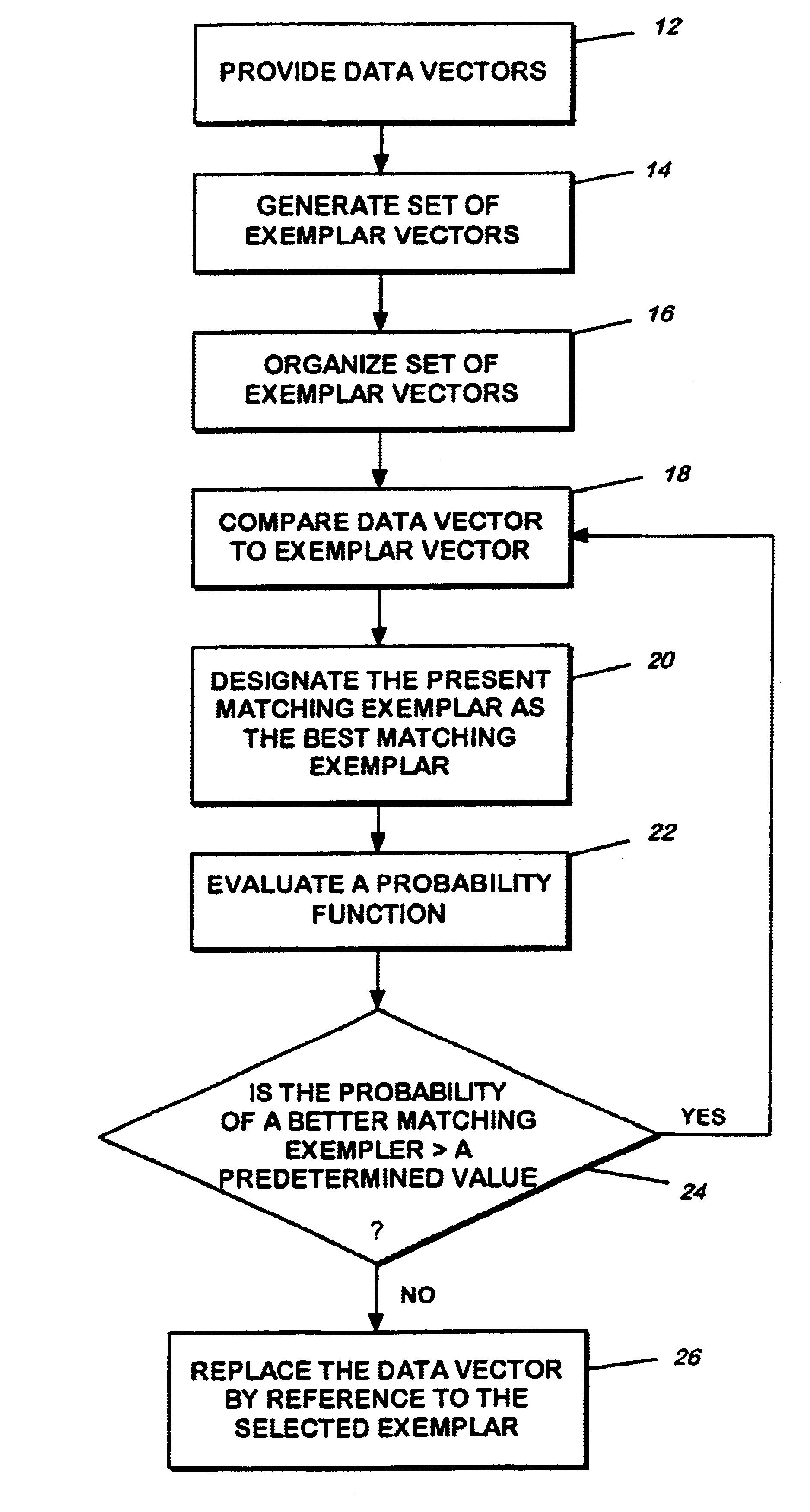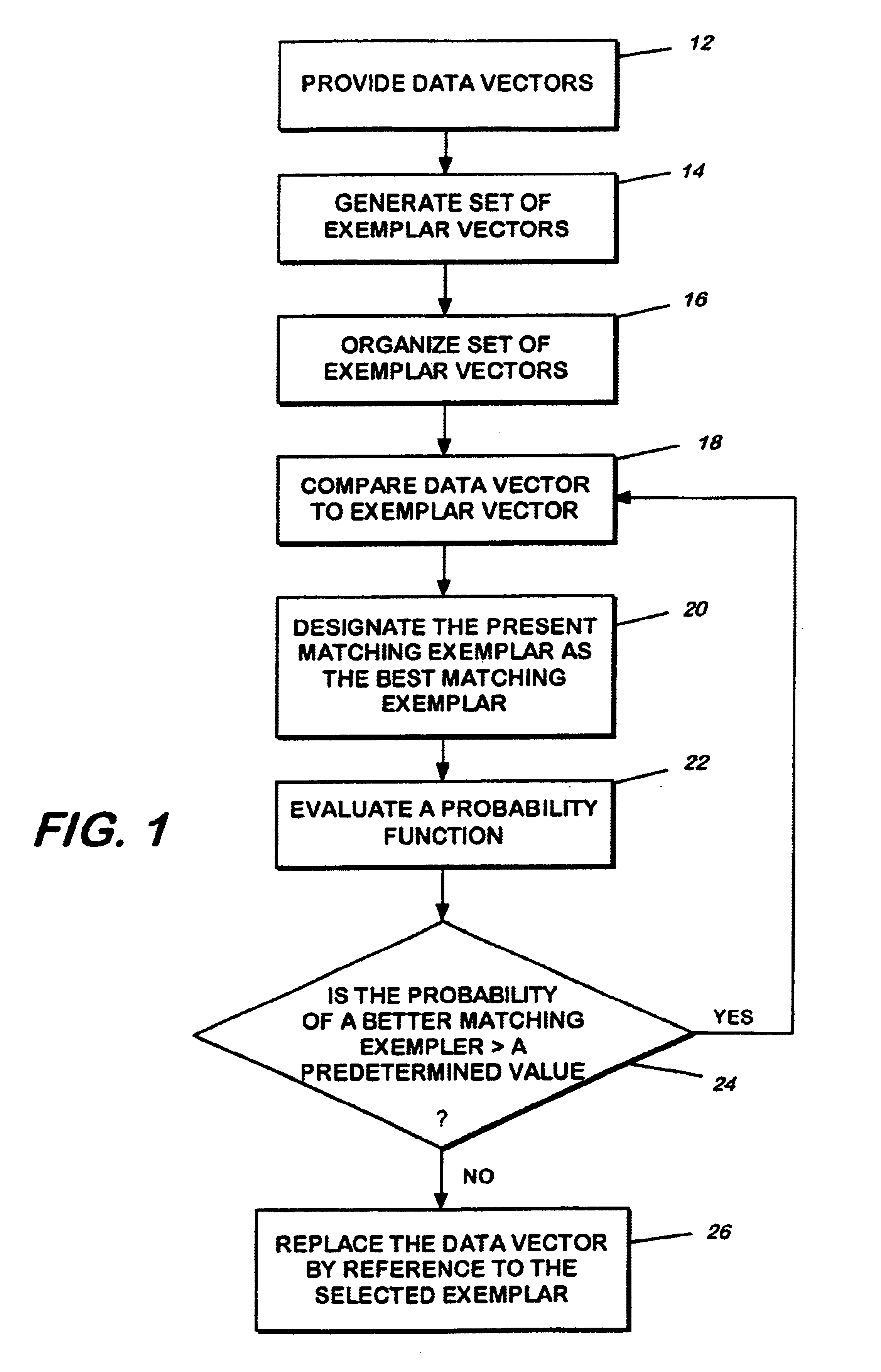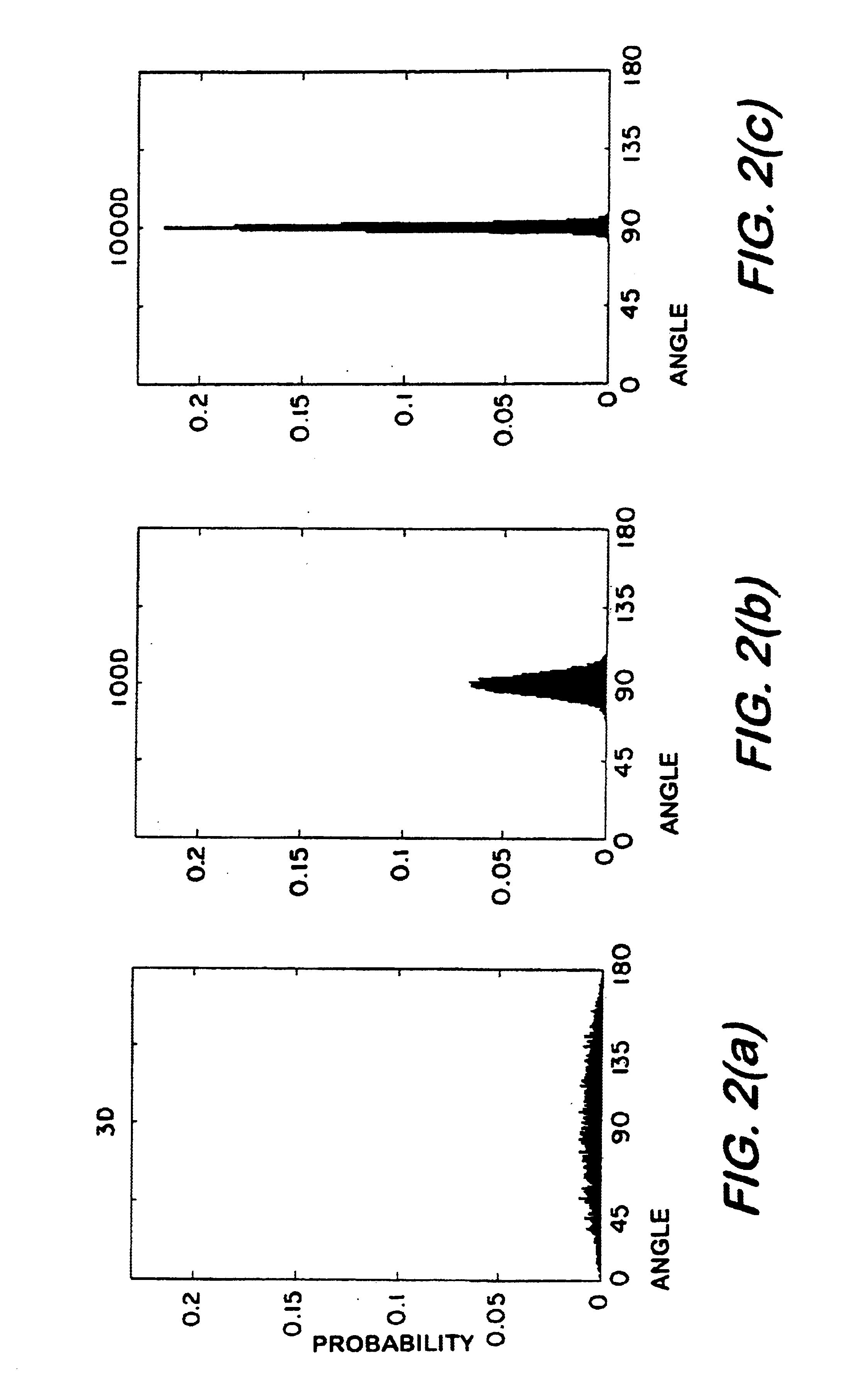Efficient near neighbor search (ENN-search) method for high dimensional data sets with noise
a near-neighbor search and noise technology, applied in the field of vector data compression methods, can solve the problems of insufficient fidelity of compressed data, inability to accurately reproduce inability to achieve the most accurate reproduction of the original data vector, etc., to achieve the effect of improving performance, reducing the rate of information loss, and improving the quality of output images
- Summary
- Abstract
- Description
- Claims
- Application Information
AI Technical Summary
Benefits of technology
Problems solved by technology
Method used
Image
Examples
Embodiment Construction
[0032]Referring now to FIG. 1, a flow chart describes one preferred method that provides near neighbor searching for high dimensional data sets. As indicated in FIG. 1, as a first step, data vectors are generated through any of a number of conventional systems known in the art (block or step 12). Thereafter, from these data vectors, a set of exemplar vectors is generated (block or step 14).
[0033]Briefly considering steps 12 and 14, it will be understood that typically the set of exemplar vectors dynamically grows during the method and comprises previously generated data vectors. In a situation where there is no exemplar vector (i.e., a previous data vector) that matches a present data vector, using a predetermined matching criterion, the present data vector is added to the set of exemplars (step 14). The method by which new data vectors are added to the set of exemplars is discussed further, in greater detail, below.
[0034]The set of exemplar vectors is organized using a sort criteri...
PUM
 Login to View More
Login to View More Abstract
Description
Claims
Application Information
 Login to View More
Login to View More - R&D
- Intellectual Property
- Life Sciences
- Materials
- Tech Scout
- Unparalleled Data Quality
- Higher Quality Content
- 60% Fewer Hallucinations
Browse by: Latest US Patents, China's latest patents, Technical Efficacy Thesaurus, Application Domain, Technology Topic, Popular Technical Reports.
© 2025 PatSnap. All rights reserved.Legal|Privacy policy|Modern Slavery Act Transparency Statement|Sitemap|About US| Contact US: help@patsnap.com



